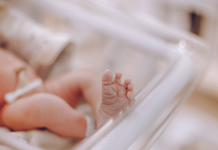Yelling doesn’t make you a bad mom … give yourself grace.

As I rushed to vacuum up dog hair for what felt like the millionth time, the dryer beeped, reminding me there was more laundry to deal with. I was already feeling overwhelmed when I heard my boys laughing as I spotted the ransacked playroom, only to realize they were throwing toy cars down the stairs. Without even thinking, I snapped at them—loudly.
Instantly, the guilt hit. That all-too-familiar feeling settled in as I replayed the sound of my own voice yelling. Why do I keep doing this? Do I yell a lot? I wondered. But I don’t feel like I do … and yet, somehow, I do feel like I do. It’s this weird tug-of-war where I want to believe I’m patient, but moments like this tell a different story.
I love my kids more than anything, and I know they’re just being kids. But here I was again, losing my patience and raising my voice over something that, looking back, wasn’t even that big of a deal.
Then I remembered the endless social media posts I’ve scrolled through about how yelling is so harmful, always offering advice on the “better” way to handle things. Instead of feeling encouraged, I felt like a failure.
I don’t want to be the mom who yells all the time. Every time I do, I feel terrible. I see the look on their faces—surprised, sometimes upset—and I can’t help but think, Am I messing this all up?
The Guilt of Yelling
If you’ve ever felt this way, know that you’re not alone. Yelling is often a response to stress, overwhelm, or frustration. We’re human, and being a mom is a tough, nonstop job. But the guilt that comes after yelling can weigh heavily on us. It whispers lies like, You’re not a good mom. You’re ruining your kids. They will yell and get this habit from you!
What I’ve realized, though, is that guilt doesn’t have to be a bad thing. It’s a sign that I care deeply about the kind of mom I want to be. It’s a reminder to pause, reflect, and make changes—not to beat myself up.
Why We Yell
Yelling usually comes from a place of feeling overwhelmed or unheard. For me, it often happens when:
- I’m trying to do too many things at once.
- I haven’t had a moment of quiet (or a moment to sit down) all day.
- My kids are testing limits (as kids do!).
- I’m holding onto my own unresolved work stress.
When I’m in the thick of those moments, yelling feels like a quick way to regain control or release frustration—but it rarely works. Instead, it leaves everyone feeling worse.
Breaking the Cycle
While I haven’t perfected this yet, I’ve been working on strategies to yell less and connect more with my kids. Here’s what’s helping me:
-
Recognizing Triggers
I’ve started noticing the moments when I’m most likely to yell—like during rushed mornings, when I’m juggling too many tasks, or when I’m in what I call “rage cleaning” mode. You know, those times when the house feels like a total disaster, no one’s helping, and I slip into a full-on woe is me spiral. It’s even worse during certain times of the month when PMDD kicks in. By recognizing these triggers, I’ve learned to plan better or give myself a little extra grace during those moments. Sometimes, that means literally stopping what I’m doing and stepping away—removing myself from the situation before things escalate. It’s not always easy, but it helps.
-
Pausing Before Reacting
This one is hard, but when I feel the urge to yell, I try to take a deep breath (or three or 20) and count to five. It’s a small pause that helps me choose a calmer response.
-
Apologizing and Repairing
When I do yell and it’s a gross overreaction, I make it a point to apologize to my kids. I’ll say something like, “I’m sorry I yelled. I was feeling frustrated, but that wasn’t the right way to handle it.” It’s important for them to see that everyone makes mistakes and that we can own up to them and try to do better.
-

Social Squares Taking Care of Myself
I’ve come to realize that when my own cup is empty, my patience runs thin. Taking even just a few minutes a day for self-care—whether it’s enjoying a quiet cup of coffee, going for a run, or intentionally segmenting my day so I can focus on one thing at a time—makes a big difference.
-
Wearing One Hat at a Time
When I carve out time specifically for work or personal tasks, it helps clear my mind and allows me to be more present and calm when it’s “mom time.” Trying to juggle too many roles at once leaves me irritable and stretched thin. I’ve learned that I need to wear my different hats at the right times, instead of trying to balance them all at once. It’s not perfect, but it’s helping me show up in each role with more patience and focus.
-
Connecting Instead of Reacting
Sometimes, kids act out simply because they’re looking for attention. Instead of reacting with frustration, I’ve started making a conscious effort to stop what I’m doing, get down on their level, and really listen. It’s amazing how much tension can be diffused when I pause and give them my full attention, rather than trying to multitask through the moment.

A Work in Progress
I’m learning to give myself grace as I navigate motherhood. I won’t always get it right, and that’s okay. What matters is that I keep trying, keep growing, and keep showing my kids that love and connection are at the heart of everything I do.
To every mom out there who feels like she yells too much: you’re not alone. You’re not a bad mom. You’re a mom who’s trying her best in a world that throws a million things at us daily. Our kids don’t need us to be perfect. They just need us to be self-aware, resolved to always try to get better and keep showing up.










